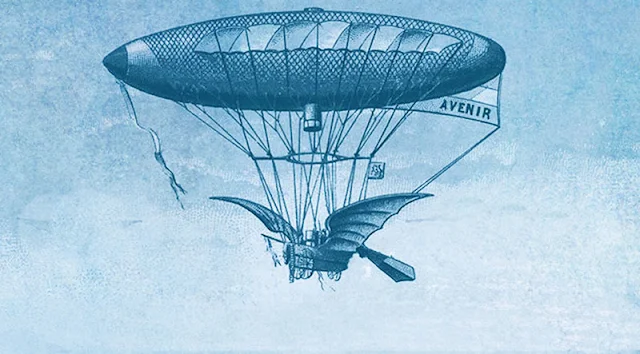19th Century Airships and Balloons
In the 1800s, we saw advances in ballooning, subsequent to the flight of the Montgolfier in 1783. Thus, it was popular all over the world by mid century. Jean-Pierre Blanchard was famous for his balloon flights all over Europe and America even though he failed at innumerable attempts to create the ornithopter. In 1785, John-Pierre with John Jeffries, a physician crossed the English Channel. They also did the exhibition ascent in Philadelphia in 1793, no less than George Washington was there to witness the event.
John Wise is the first balloonist in America and had the privilege of being trained by Jean-Pierre. John Wise went on to train many others in America. This spurred the interest of the whole of America in ballooning. Jean-Pierre died in an experimental parachute jump from his balloon in 1809. During the civil war, the four balloons were placed in strategic places to enable to observe below and communicate telegraphically with the rest of the balloons.
The confederacy realized the potential of ballooning for reconnaissance; they tried to put up a program but never succeeded. To make the balloon an observation area is Thaddeus Lowe’s idea and it was used as a pivot in telegraph mail between the White House and the balloon.
Balloons with propellers were developed after Jean-Pierre and John Jeffries crossing of the English Channel. The English Channel also became famous and found its mark in the history of aviation.
The art of aerial photography high up in a balloon was credited to Felix Tournachon (Nadar) of France. A whole photographic laboratory was even brought on a huge balloon. Felix was more known during the siege in the year 1870, where he ballooned mail and passengers out of Paris.
During the end of the 19th century, an attempt was made to balloon pass the North Pole. Attempt was made July 11, 1897 by Salomon August Andree and two others, launching from Spitzbergen. The trio never came back until an expedition in 1930 found their frozen bodies. It was realized that the balloon crashed on ice and that they froze while attempting to walk back to civilization.
Propeller systems for balloons enabled a balloon to be controlled to where it has to go. Many engineers saw it fit to put propellers and started work right away. This gave birth to the dirigible. First successful flight was on September 24, 1852. Henri Giffard conceptualized the cigar shaped design. It is filled with hydrogen and possesses a steam engine. As expected, it runs at gentle speeds of 5 miles per hour.
Thaddeus Lowe built the initial balloons that were used for observation during the Civil War at Virgina in Fair Oaks. The LZ4 was Germany’s pride but during an attempt to break an endurance record it got destroyed. During this Civil War, an army general from Germany known as Ferdinand von Zeppelin had noticed the extensive use of balloons. The Count von Zeppelin along with chief engineer Ludwig Durr, created a 420-feet airship, it is designed to carry multitudes of people.
A number of victorious dirigible flights happened towards the end of the 1880s. This moved the Germans to thinking of the possibility of using the airship as a means of traveling. Experiments went on with two models, one with gasoline engine and the other covered with aluminum sheet. Unfortunately, both crashed while doing test flights in 1897.
Read also: Commercial Aviation from the 1920’s-1930
Read also: Commercial Aviation from the 1920’s-1930
